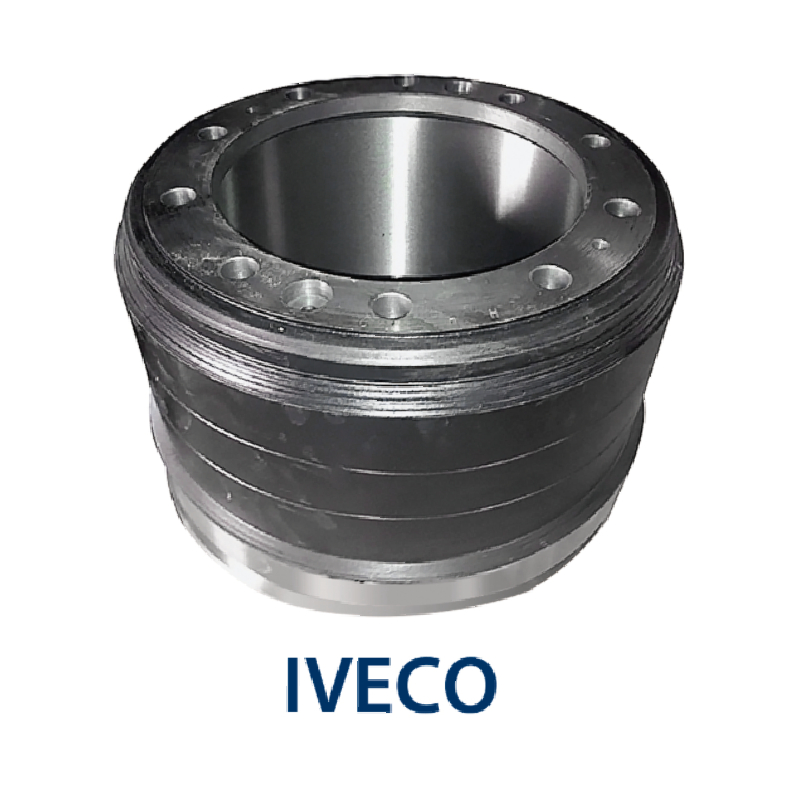វិច្ឆិកា . 27, 2024 17:05 Back to list
Can Brake Drums Be Resurfaced for Better Performance and Longevity?
Can Brake Drums Be Turned?
Brake drums are a crucial component in the braking systems of many vehicles, particularly those with drum brake setups. Understanding whether brake drums can be turned, or machined, is a significant concern for both mechanics and vehicle owners alike. This process involves removing a small amount of material from the surface of the drum to restore it to a smooth, usable state. Let's delve into the details of this process, its benefits, and its limitations.
What Does It Mean to Turn Brake Drums?
Turning brake drums refers to the machining process that smooths out the inner surface of the drum, which may have become warped, scored, or uneven due to wear and tear. During this process, the brake drum is mounted on a lathe, and a cutting tool is used to shave off a thin layer from its surface. This helps to create a uniform contact area for the brake shoes, which in turn enhances braking performance.
Benefits of Turning Brake Drums
One of the primary benefits of turning brake drums is cost efficiency. Rather than replacing worn brake drums with new ones, which can be expensive, machining the existing drums can extend their life. This is particularly useful for older vehicles where replacement parts may be harder to find or more costly.
Additionally, turning the drums can improve brake function. A smooth, even surface allows the brake shoes to make better contact, which enhances stopping power and reduces the likelihood of brake pulsation or uneven wear. When the surface is in good condition, the vehicle can maintain better control during braking, which is essential for safety.
Limitations and Considerations
can brake drums be turned

Despite the advantages, there are limitations to turning brake drums. First and foremost, there is a maximum depth to which a drum can be turned. Each drum comes with a 'minimum thickness' specification from the manufacturer. If turning the drum reduces it below this thickness, it can compromise the structural integrity and safety of the braking system. In such cases, replacing the drum is the recommended course of action.
Another important consideration is that not all drums are suitable for turning. Some materials, particularly those used in cheaper or budget brake drums, may not have sufficient material thickness to withstand the machining process. Additionally, if a drum is excessively warped or has significant cracks, it is better to replace it entirely rather than attempt to turn it.
The Turning Process
The process of turning brake drums should ideally be carried out by a qualified mechanic with experience in brake systems. The first step involves thoroughly inspecting the drum for any signs of severe wear or damage. If it passes inspection, the next phase involves setting up the drum on a lathe, ensuring it is securely mounted.
The lathe operator will then adjust the cutting tool to the appropriate depth and begin the machining process. After turning, the drum is measured to ensure it meets manufacturer specifications. It is also essential to clean the drum thoroughly to remove any metal shavings and debris before reinstalling it.
Conclusion
In summary, turning brake drums can be a practical and cost-effective solution for restoring functionality to worn brake components. However, it is essential to consider the condition of the drum, adhere to the manufacturer's specifications, and consult with a qualified mechanic. While turning can extend the life of brake drums, knowing when to replace them is crucial for maintaining vehicle safety and performance. Proper attention to brake system maintenance, including the condition of brake drums, can lead to a safer and more reliable driving experience.
-
Brake Drum Man - High-Quality Drum Brake Drums & Brake Shoes for Reliable Performance
NewsJun.24,2025
-
High-Quality Brake Drum Kamaz – Durable Drum Brake Drum & Brake Shoe Replacement
NewsJun.10,2025
-
High-Quality Brake Drum Liza for Drum Brake Systems - Superior Durability and Performance
NewsJun.10,2025
-
High-Quality Brake Drum Kamaz – Durable Drum Brake Drum & Brake Shoe Solutions
NewsJun.10,2025
-
Durable Kamaz Brake Drums High-Performance Truck Parts
NewsJun.09,2025
-
Premium Brake Drum Maz Kit with Shoes Enhanced Braking
NewsJun.09,2025
